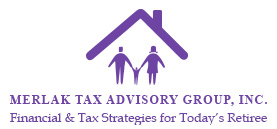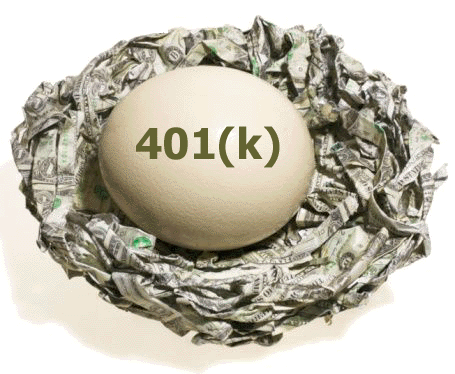 8 tips on moving 401(k) after leaving job
8 tips on moving 401(k) after leaving job
By Dana Dratch• Bankrate.com
Location of article:
http://www.bankrate.com/finance/retirement/moving-401k-after-leaving-job-1.aspx
8 tips for moving your 401(k)
Workplace retirement accounts are designed to be portable.
But the proposition of moving your 401(k) is a little more challenging than throwing your photos and favorite coffee mug into a box and grabbing your tablet on the way out the door.
If you’re changing jobs or have been laid off, chances are that your 401(k) account is the last thing on your mind.
But it pays to include that money in your moving plans — even if you don’t deal with it right away. If you’re leaving an employer, here are eight things you need to know about moving your 401(k).
Take out a 401(k) loan? It’s due now
Borrow any money from your 401(k)? If you’re leaving the company, voluntarily or otherwise, it’s now due in full.
“I think that many people forget that if they have a loan outstanding, it has to be paid,” says Wayne Bogosian, president of the PFE Group and co-author of “The Complete Idiot’s Guide to 401(k) Plans.”
Fail to repay it and the loan amount will count as income, plus you’ll pay an additional penalty equal to 10 percent of the sum you borrowed if you’re younger than age 59 1/2, he says.
What you might not know: Sometimes, especially in the case of layoffs, “employers will take it upon themselves to initiate a change in the plan to make available post-employment repayment,” says Bogosian.
How it works: You can keep making regular payments as an ex-employee, just as you were doing as an employee. And since it’s a loan that you’re repaying, it doesn’t trigger any penalties or count toward income, he says.
You haven’t heard about this feature from your former employer? “I would not be at all shy to ask,” says Bogosian. “There is nothing wrong with asking, ‘Can I pay back the loan post-employment?’ Plans can be amended to do this.”
IRA rollover isn’t your only option
Rolling 401(k) money into an IRA may not be your best choice, according to some experts.
Other options: You can leave the account where it is, move the money to your new company’s plan, roll it into a traditional or Roth IRA, take a lump-sum distribution (cash it out) and, if you have company stock, move the stock to a brokerage account while putting the rest into another retirement account.
The truly smart move for you depends on your own individual circumstances and goals.
Some important factors to consider: the account balance; whether it’s a traditional 401(k) or a Roth; whether you have company stock (and want to keep it or buy more); whether you fear collection actions (because workplace plans are federally protected from creditors); whether you want to take a penalty-free withdrawal between ages 55 and 59 1/2; and the quality of your new company’s retirement plan.
“Do your own homework,” says Bogosian. “This is one area where generalizing can get you into trouble.”
Too many times, advisers “don’t know what they don’t know,” says Ed Slott, an IRA expert and author of “The Retirement Savings Time Bomb and How to Defuse It.”
So get several opinions along with doing your own research.
Take a breather
Changing jobs is stressful, even in the best of circumstances. If you’ve lost a job and are scrambling for re-employment, you’re likely focused on that.
Chances are, you probably don’t have to move that money right away. If your balance is $5,000 or more, you can leave the money right where it is, Bogosian says. (Be careful if it’s less than that: The company could cash it out and send you a check or roll your balance over to an IRA, he says.)
His advice: Check the rules and, where possible, “don’t do anything for the first six months.”
On your first day at the new job, sign up for the company 401(k) plan, even if your new employer has an automatic opt-in, says Bogosian.
What you might not know: With many company plans, automatic opt-in doesn’t kick in for one to three months. So if you rely on that, rather than taking the initiative, you can miss 30 to 90 days of contributions and matching funds, he says.
After six months, you’ve got a handle on the job, know you’re going to stay and have had experience with your new plan. So you’re now in a strong position to compare your last 401(k) plan with this new one, including the diversity of the investments and the costs, he says.
Compare plan costs
In the recent past, comparing the cost you pay for investments through one company’s plan with similar offerings in a brokerage firm’s IRA or another company’s 401(k) was difficult.
Now fees and costs have to be disclosed, which means you can compare apples to apples, says Bogosian.
When you compare the plan costs, ask for the participant fee disclosure for each plan, he says. That document will reveal all the fees, both obvious and obscure, associated with each plan, he says.
Then look at what you’ve invested in and what you want to invest in, and evaluate costs.
Keep tabs on the old 401(k)
If you decide to leave an account with an old company, keep up with both the account and the company.
“People change jobs a lot more than they used to,” says Peggy Cabaniss, CFP, president of HC Financial Advisors in Lafayette, California, and past chair of the National Association of Personal Financial Advisors. “So it’s easy to have this string of accounts out there in never-never land.”
Cabaniss recalls one client who left an account behind after a job change. Fifteen years later, the company had gone bankrupt. While the account was protected and the money still intact, getting the required company officials and fund custodians to sign off on moving it was a protracted paperwork nightmare, she says.
“When people leave this stuff behind, the biggest problem is that it’s not consolidated or watched,” says Cabaniss.
If you do leave an account with a former employer, keep reading your statements, keep up with the paperwork related to your account and keep an eye on the company’s performance.
Follow the money
If you decide to move the money, do it carefully. First, if you haven’t already, establish the new accounts where you want to move your money.
Next, contact the current account custodian and fill out its paperwork, says Cabaniss. After that, contact your account’s custodian-to-be and fill out that paperwork, she says.
Then keep an eye on the process and make sure the money ends up at its new home on time, Cabaniss says. You have 60 days to redeposit the money into a new retirement account before it’s labeled a “cash out” and you’re hit with penalties.
Some possible scenarios Cabaniss has witnessed:
- The check arrives on time to the new custodian. Your job: Make sure it’s deposited into the right account within the required 60-day period.
- The check is sent to you — made out to you or the new custodian. Your job: Don’t cash it — get it quickly to the new custodian.
- The check is sent to the wrong address or your old address. Your job: Get it rerouted by your deadline.
Bottom line: Follow up until your money is safely in its new home. Then get — and save — the written proof.
HR doesn’t work for you
The human resources department at your former, soon-to-be-ex or new employer doesn’t work for you, says Slott. “They work for the company.”
And they have to cover a lot of ground on a lot of different issues for a lot of other employees.
If you’re not comfortable with following the money yourself, hire an expert to handle it for you. But beware: Even experts can get it wrong.
“It’s a specialized field,” Slott says. That’s when it can pay to have someone who has a lot of experience and training in this particular aspect of retirement planning, Slott says. “Most of the money is lost on the way out of the account,” he says, meaning that if the transfer is not handled correctly, you could lose a chunk of it.
What to look for: an adviser with plenty of experience, training and references in this particular part of the process, he says.
Cashing out is popular, not smart
Intellectually, consumers know that cashing out retirement accounts isn’t a smart move. But plenty of people do it anyway.
From October through December 2013, more than a third of workers cashed out their 401(k) accounts when they changed jobs, and the number was higher — 41 percent — among workers aged 20 to 39, according to a Fidelity Investments study released earlier this year. The average amount liquidated was “nearly $16,000,” the survey found.
The less you make, the more likely you might be to raid your own retirement fund, another Fidelity Investment study revealed.
Half of workers who made $20,000 to $30,000 cashed out their accounts when they changed jobs, as opposed to 43 percent of those making $30,000 to $40,000 and 36 percent of those making $40,000 to $50,000, according to the study.
By comparison, workers who make $100,000 cashed out 13 percent of the time.
But if that $16,000 stays in a retirement account earning 7 percent annually, in 40 years it would increase to nearly $240,000. That can mean the difference between eating canned or fresh vegetables in retirement.
Bottom line, says Bogosian: “Regardless of the amount, keep it to its intended purpose.”
Get your questions answered by scheduling a complimentary strategy session.
Investment advisory services offered through Brookstone Capital Management, LLC (BCM), a registered investment advisor. BCM and Carla J. Merlak are independent of each other.

